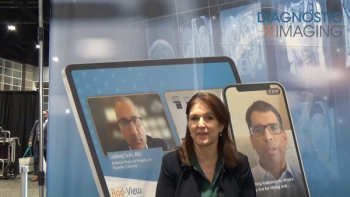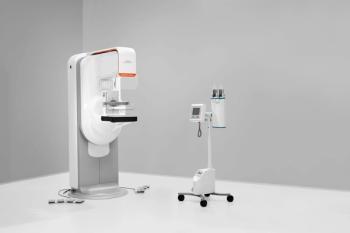
Philips HIFU/drug combo enters testing
Other headlinesSiemens PET agent shows promiseToshiba Workstation debuts at TCT 2009
Philips HIFU/drug combo enters testing
A heat-activated drug may boost the effectiveness of high-intensity focused ultrasound in its fight against difficult to treat cancers. The maker of the drug, Celsion, is working with Philips, the maker of the MR-guided HIFU system, to test the combination. Ultimately, the two companies hope to use the Philips system to target lesions with acoustic energy, creating sufficient heat to activate ThermoDox and preferentially release high concentrations of the chemotherapy drug doxorubicin to treat pancreatic cancer and cancer metastases in bone. With the feasibility stage now completed, pre-clinical development will focus on the combined use of Celsion’s ThermoDox and Philips’ MR-HIFU system.
Siemens PET agent shows promise
Initial clinical tests of a new PET biomarker, designed to determine the potency of malignant cancer cells in patients, indicate the feasibility of the biomarker as an in vivo agent. In development by Siemens and Fox Chase Cancer Center, the new agent is designed to capture and quantify the cellular expression of CA-IX, an enzyme linked to tumor growth and invasion, as well as hypoxia. Results of the so-called “Phase 0” or “first-in-human” tests, conducted in healthy volunteers and presented Sept. 23 at the World Molecular Imaging Conference in Montreal, documented bio-distribution of the new agent at safe levels for PET imaging and established the agent as stable 133 minutes after injection, a sufficient window for acquiring the image. The research also found that the agent safely clears the body in urine. Further clinical study is in progress, according to Siemens.
Toshiba Workstation debuts at TCT 2009
Toshiba America Medical Systems unveiled an advanced workstation for reconstructing data obtained with its Infinix-i systems. The Next Generation CV-3D workstation and software package, unveiled Sept. 21 to Sept. 25 at the Transcatheter Cardiovascular Therapeutics meeting in San Francisco, constructs volumetric images in seconds. Enhancements optimize stent selection and positioning by automatically including markers and providing a view of the stent in relationship to the vessel wall so as to assess stent deployment.
Newsletter
Stay at the forefront of radiology with the Diagnostic Imaging newsletter, delivering the latest news, clinical insights, and imaging advancements for today’s radiologists.




























